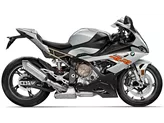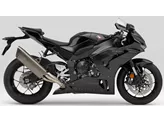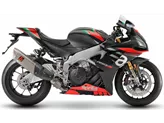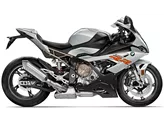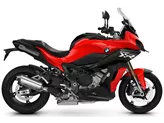BMW S 1000 RR 2019 vs. Kawasaki Ninja ZX-6R 636 2013

BMW S 1000 RR 2019

Kawasaki Ninja ZX-6R 636 2013
Overview - BMW S 1000 RR 2019 vs Kawasaki Ninja ZX-6R 636 2013
The BMW S 1000 RR model year 2019 and the Kawasaki Ninja ZX-6R 636 model year 2013 are both supersport motorcycles that offer impressive performance and advanced features.
Starting with the BMW S 1000 RR 2019, it is equipped with an in-line, 4-cylinder engine with a displacement of 999cc. This powerful engine produces 207 horsepower and 113 Nm of torque, making it one of the most powerful bikes in its class. The engine has a bore of 80mm and a stroke of 49.7mm, resulting in a compression ratio of 13.3. The S 1000 RR also features an advanced electronics package, including ABS, riding modes, launch control, traction control, and a quickshifter. The bike's suspension consists of an upside-down telescopic fork at the front and adjustable compression, preload, and rebound settings for both the front and rear suspension. The chassis is made of aluminum and has a twin tube, load-bearing engine design. The braking system consists of double disk brakes at the front with radial technology. The S 1000 RR has a wheelbase of 1441mm, a seat height of 824mm, and a kerb weight of 197kg with ABS. The fuel tank capacity is 16.5 liters. Overall, the BMW S 1000 RR 2019 offers a wide rev range, precise handling, and a sportier seating position, making it a top choice for riders seeking high performance and advanced features.
On the other hand, the Kawasaki Ninja ZX-6R 636 2013 is also equipped with an in-line, 4-cylinder engine, but with a smaller displacement of 636cc. This engine produces 131 horsepower and 71 Nm of torque, which is less powerful compared to the BMW S 1000 RR. The bore of the engine is 67mm and the stroke is 45.1mm, resulting in a compression ratio of 12.9. The Ninja ZX-6R 636 features an upside-down telescopic fork at the front with adjustable compression, preload, and rebound settings for both the front and rear suspension. The chassis is made of aluminum and has a twin tube, perimeter, extruded design. The braking system consists of double disk brakes at the front with radial, monoblock, petal technology. The wheelbase of the Ninja ZX-6R 636 is 1395mm, the seat height is 830mm, and the kerb weight with ABS is 194kg. The fuel tank capacity is 17 liters. While the Ninja ZX-6R 636 may have a lower power output compared to the S 1000 RR, it still offers good handling and uncompromising reliability.

BMW S 1000 RR 2019
In terms of strengths, the BMW S 1000 RR 2019 has a very linear power delivery, offering excellent control and speed for most riders. It also has a wide rev range and a pleasant dosing. The bike's new Dynamic Damping Control (DDC) system provides even more precise performance. The S 1000 RR also boasts a superb electronics package, including ABS, riding modes, launch control, ride by wire, quickshifter, and traction control. Additionally, the bike offers a more active and sportier seating position, and its high-quality details such as the frame, swingarm, and display add to its appeal.
On the other hand, the strengths of the Kawasaki Ninja ZX-6R 636 2013 lie in its sharpened geometry, good handling, and uncompromising reliability.

Kawasaki Ninja ZX-6R 636 2013
As for weaknesses, the BMW S 1000 RR 2019 may lose a certain amount of "thrill" due to its linear power delivery, which some riders may find less exciting. The bike's menu navigation may also take some time to get used to.
On the other hand, the Kawasaki Ninja ZX-6R 636 2013 has a high purchase price compared to its competitors.
In conclusion, the BMW S 1000 RR 2019 and the Kawasaki Ninja ZX-6R 636 2013 are both impressive supersport motorcycles with their own strengths and weaknesses. The S 1000 RR offers exceptional power, advanced electronics, and a sportier seating position, while the Ninja ZX-6R 636 provides good handling and reliability. Ultimately, the choice between the two will depend on the rider's preferences and priorities.
Technical Specifications BMW S 1000 RR 2019 compared to Kawasaki Ninja ZX-6R 636 2013
Pros and Cons in comparison
Pros and Cons in comparison
BMW S 1000 RR 2019

The new 2019 BMW S 1000 RR is a completely new supersports bike. It has become significantly more compact and, above all, lighter. The machine is incredibly easy to control and, compared to the previous model, almost feels like a 600! The seating position and the entire set-up of the machine have become much sportier, but can be brought to the tarmac in a much more user-friendly way thanks to the significantly improved electronics package, the saved weight and, last but not least, the almost linear power delivery of the power unit - bravo! Unfortunately, there is still one downer: if you want to benefit from the innovations to the maximum, you have to put a maximum number of crosses in the dealer's box. In return, however, you can create your own individual BMW!
Kawasaki Ninja ZX-6R 636 2013

The Kawa convinces with its good handling and uncompromising reliability. A strong motorbike, but definitely not a bargain.
Price Comparison Avarage Market Price BMW S 1000 RR vs Kawasaki Ninja ZX-6R 636
There are a few key differences between a BMW S 1000 RR 2019 and a Kawasaki Ninja ZX-6R 636 2013. There are the same number of bikes of both models available on the 1000PS.de marketplace, specifically 11. It takes less time to sell a BMW S 1000 RR with 63 days compared to 122 days for a Kawasaki Ninja ZX-6R 636. Since model year 2010 1000PS.de editors have written 135 reviews for the BMW S 1000 RR and 7 reviews for the Kawasaki Ninja ZX-6R 636 since model year 2013. The first review for the BMW S 1000 RR was published on 16/04/2008 and now has more than 4,000 views. This compares to more than 20,800 views for the first review on Kawasaki Ninja ZX-6R 636 published on 03/12/2012.



